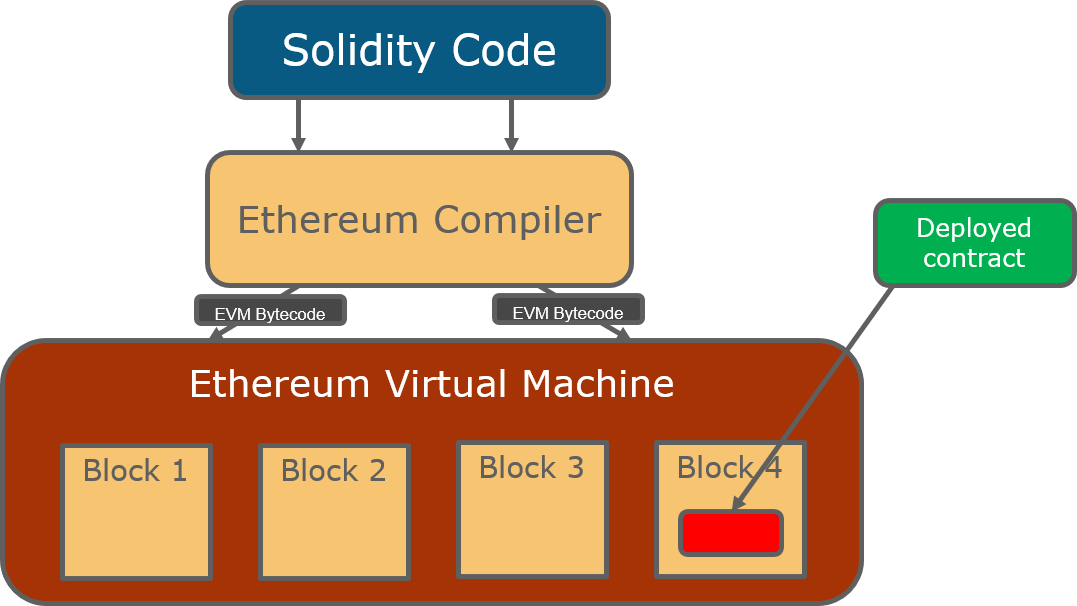Architecture Of Ethereum Blockchain With Diagram
Architecture of ethereum blockchain with diagram unfolds the intricate design behind one of the most revolutionary platforms in the blockchain space. Ethereum stands out not just for its cryptocurrency, but for its robust framework that supports decentralized applications and smart contracts. By delving into its architecture, we can appreciate how Ethereum operates differently from other blockchain platforms, highlighting its unique components and their roles.
This exploration covers the Ethereum Virtual Machine, the role of smart contracts, and the consensus mechanisms that ensure the network's integrity. With a visual diagram to complement the technical details, readers will gain a clearer perspective of Ethereum's structural dynamics.
Introduction to Ethereum Blockchain Architecture
The Ethereum blockchain represents a revolutionary step in the evolution of blockchain technology. Unlike earlier systems that strictly emphasize peer-to-peer transactions, Ethereum introduces a rich environment for decentralized applications (DApps) and smart contracts. Its significance lies not only in enabling financial transactions but also in providing a platform for developers to build complex applications that operate without central authority.The architecture of Ethereum is composed of several key components that work in harmony to maintain the integrity, security, and functionality of the network.
These components include the Ethereum Virtual Machine (EVM), smart contracts, and the consensus mechanism, all integral to Ethereum's operations. What sets Ethereum apart from other blockchain platforms is its focus on programmability and flexibility, allowing developers to create a wide range of applications tailored to diverse needs.
Core Components of Ethereum Architecture

The Ethereum blockchain is underpinned by several core components that facilitate its unique capabilities. Ethereum Virtual Machine (EVM)The EVM serves as the runtime environment for smart contracts in Ethereum. It is responsible for executing code and managing the state of all accounts and smart contracts on the network. This sandbox environment ensures that code runs exactly as intended, regardless of the underlying hardware or software.
Smart ContractsSmart contracts are self-executing contracts with the terms of the agreement directly written into code. They enable trustless transactions and automate processes without intermediaries. These contracts operate on the EVM, ensuring they are executed in a secure and deterministic manner. Storage MechanismsEthereum uses a combination of state and transaction storage mechanisms. The state is a snapshot of all account balances and smart contract data at a given point in time, while transactions are records of state changes that occur on the blockchain.
This dual approach ensures that data integrity is maintained while also allowing for efficient data retrieval and updates.
Ethereum Consensus Mechanism
The consensus mechanism in Ethereum ensures that all participants agree on the network's state. Proof of Stake (PoS)Ethereum 2.0 introduces the Proof of Stake (PoS) mechanism, which replaces the previously used Proof of Work (PoW) system. In PoS, validators are chosen to create new blocks based on the amount of cryptocurrency they hold and are willing to "stake" as collateral. This change aims to enhance energy efficiency and reduce the environmental impact of blockchain operations.
Comparison of PoS and PoWThe transition from PoW to PoS brings several fundamental differences in how consensus is achieved.
| Aspect | Proof of Work (PoW) | Proof of Stake (PoS) |
|---|---|---|
| Energy Consumption | High | Low |
| Security | Secured by computational power | Secured by economic stake |
| Block Reward | Miners receive rewards for solving puzzles | Validators receive rewards for their stake |
| Decentralization | Can lead to mining centralization | Encourages diverse validators |
Ethereum Network Structure
The Ethereum network operates on a peer-to-peer model, allowing nodes to connect directly with one another. Peer-to-Peer Network ModelThis decentralized network structure means that each node retains a full copy of the blockchain, ensuring transparency and redundancy. Each node can validate transactions independently, contributing to the overall security and integrity of the system. Node InteractionsNodes within the Ethereum network interact through a protocol that facilitates communication and data sharing.
They propagate transactions and blocks to maintain consensus across the network, ensuring that all participants have the most current state of the blockchain. Network Structure DiagramA diagram illustrating the Ethereum network structure would typically showcase various node types, such as full nodes, light nodes, and miners, highlighting their roles and how they communicate within the ecosystem.
Smart Contracts and DApps
Smart contracts act as the backbone for decentralized applications (DApps) on the Ethereum platform. Creation and Deployment of Smart ContractsDevelopers create smart contracts using programming languages such as Solidity. Once written, these contracts are deployed on the Ethereum blockchain, where they can be accessed and executed by users and other contracts, opening avenues for innovative applications across various industries. Architecture of DAppsDApps leverage smart contracts to function without a central authority, offering users transparency and security.
They are designed to be resistant to censorship and operate autonomously, which aligns perfectly with the ethos of decentralization. Successful DApps ExamplesExamples of successful DApps include Uniswap, a decentralized exchange, and CryptoKitties, a blockchain-based game. Their impact on the Ethereum ecosystem demonstrates the adaptability and potential of the platform, spurring further innovation in the decentralized space.
Security Features of Ethereum
Security is a paramount concern in Ethereum's architecture, ensuring safe transactions and contract executions. Integrated Security MeasuresEthereum employs multiple security measures, including cryptography to secure transactions and the integrity of smart contracts. The use of public and private keys helps safeguard user identities and assets. Cryptography's RoleThe cryptographic techniques underpinning Ethereum ensure that transactions are secure, verifiable, and immutable. These technologies prevent unauthorized access and modifications to the blockchain.
Common Vulnerabilities and Best PracticesWhile Ethereum is designed with security in mind, vulnerabilities can still arise. Some common vulnerabilities include:
- Reentrancy Attacks
- Integer Overflow and Underflow
- Gas Limit and Loops
- Timestamp Dependence
To mitigate these vulnerabilities, developers should follow best practices such as thorough testing, code audits, and adhering to established design patterns.
Future Developments in Ethereum Architecture

As Ethereum continues to evolve, numerous upgrades and features are on the horizon. Upcoming UpgradesFuture developments aim to enhance scalability and performance through technologies like sharding and Layer 2 solutions. These upgrades will enable the Ethereum network to process many more transactions per second, addressing current limitations. Impact on the Community and EcosystemAs Ethereum improves, these changes are expected to positively impact the community by fostering greater adoption and creating opportunities for new projects and innovations.
The continued growth of the Ethereum ecosystem will likely lead to an even more vibrant and diverse array of applications and services.
Epilogue

In conclusion, the architecture of the Ethereum blockchain with a diagram reveals the complexity and innovation driving this leading platform. As we have discussed, the integration of smart contracts, the Ethereum Virtual Machine, and the shift to Proof of Stake are pivotal. With continuous developments on the horizon, Ethereum is poised for further evolution, promising to enhance its scalability and overall impact on the blockchain ecosystem.
Question & Answer Hub
What is the Ethereum Virtual Machine (EVM)?
The Ethereum Virtual Machine is the runtime environment for executing smart contracts on the Ethereum blockchain, providing a decentralized platform for developers.
How do smart contracts work on Ethereum?
Smart contracts on Ethereum are self-executing contracts with the agreement directly written into code, allowing for automated and trustless transactions.
What are the advantages of Ethereum's Proof of Stake (PoS)?
PoS offers reduced energy consumption compared to Proof of Work, increased security, and the ability to earn rewards by holding Ethereum.
What role do nodes play in the Ethereum network?
Nodes in the Ethereum network maintain the blockchain, validate transactions, and participate in the consensus process to ensure network reliability.
What are DApps and how do they relate to Ethereum?
Decentralized applications (DApps) are applications built on the Ethereum blockchain that utilize smart contracts to operate without a central authority.

